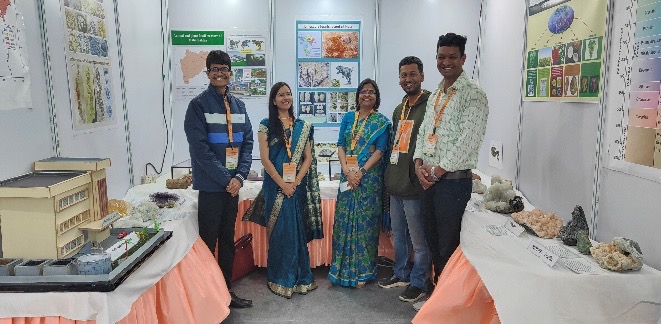An exhibition of rare fossils and minerals at the university’s Department of Geology has been drawinglarge numbers of science enthusiasts and common people alike. The display has been arranged on the side lines of the 108th Indian Science Congress hosted by RashtrasantTukadoji Maharaj Nagpur University.
The exhibit showcases the mineral and fossil wealth of Central India and also the trends of the ongoing research in the Department. Among the many attractions, the fossils of dinosaurs, turtles and various other plants and animals were a crowd-puller among children, students and researchers of all ages.
The exhibition displays eggs of Indian dinosaur Abelisauridtheropod and Titanosaurid sauropod, coprolites (dung mass), and bones of dinosaurs. Plants fossils recorded from central India also gained a lot of attention. Central India has an abundance of fossil wealth.
The oldest rice, and grasses have been recorded from Pisduraarea in Chandrapur, district Maharashtra, and oldest record of grapes reported from Mahurzari village were also a part of the exhibit. The exhibition also has beautiful mineral collections that are found from the volcanic flows in Maharashtra and Central India.
Interesting cost-effective working models on current topics such as rainwater harvesting are also displayed in the exhibition. The Head of the Department, Dr K. R. Randiveand Dr Bandana Samant, Associate Professor, have organised this exhibition along with the help of researchers AnupDhobale, Akash Karande, Abhilash Sen, Neha Thakre and other students.
👉 Click here to read the latest Gujarat news on TheLiveAhmedabad.com




